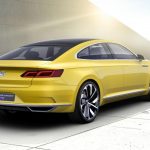It's Easier Here.
Leith Cars Blog
Well-functioning companies don’t do anything that doesn’t make money. Therefore, while we all know that Super Bowl commercials famously cost millions of dollars for just a handful of seconds, we can be sure that they are financially worth it. Unless you’re Nationwide. No one ever bought something from a doom-and-gloom salesman, aside from purchasers of dark robes and goats’ blood.
In any case, when we apply this principle to car commercials, it gets a bit trickier to evaluate. The Super Bowl happens a full month after the holiday season has ended, which is traditionally when most car purchases happen. However, just as ice cream companies debut new flavors in the winter, automakers know that consumers need time to get to know a vehicle before purchasing it.
Even though the impact—in terms of actual purchases—of Super Bowl ads are felt throughout the year, what can be measured in real-time is web traffic. One magazine, Adweek, partnered with popular auto website Kelley Blue Book to monitor how the vehicles depicted in Super Bowl XLIX commercials fared on KBB’s website.
A truly comprehensive test would be to monitor all of the brands’ site traffic, Google and Bing search traffic, and local sales leads to dealers. But that would be a lot of work. So we’re going with just KBB numbers here. Here’s a snippet of their findings:
“According to Adweek analyzing figures from Kelley Blue Book, the Lexus coupe saw an astounding 1,820-percent increase in searches on the auto pricing site, more than any other vehicle advertised during the game. Viewers were apparently intrigued by the BMW i3 because the EV came in second place with a 1,131-percent jump. Third place went to the Mercedes-AMG GT with a 950-percent boost from its whimsical ad. The lowest growth for the night was from Toyota with a 20-percent upswing for the Camry.”
If you saw these commercials, you can judge how true these numbers feel. The great thing about numbers, however, is that their truth has nothing to do with feeling. Lexus’s ad didn’t have a single line of dialogue, didn’t do any sentimental cloying with puppies or kittens, didn’t try to tell a story, didn’t have any characters, and didn’t do anything absurdist or bizarre. Aside from portraying a Lexus as a precision-drifter, of course.
The most successful ad of the night, therefore, went to a company that didn’t exhaust itself trying to be cool. It was a straight-up car commercial. Sure, they didn’t do the usual “watch-us-drive-by-ourselves” thing. They did some toy car as regular car mirroring because they somehow knew that the kind of people who are into Lexuses are also into toy cars. You get the feeling that some stuffed shirt kicked his feet up on the desk, stared thoughtfully at the ceiling, and said, “Did you guys know that there’s a seventh Fast & Furious movie coming out this year? I think Americans might like drifting.”
By gum, he was right.
The three other ads mentioned by Adweek feel much more desperate for your approval. BMW tried to be funny with America’s hysterical comedy couple, Katie Couric and Bryant Gumbel. Mercedes-Benz went The Full Pixar with woodland creatures saying one-liners so painful that the higher-ups in Germany will probably not turn on their televisions for a month. And Toyota plied its usual track of family and safety, earning itself a thumping (1,820 percent vs. 20 percent, yowch) that hasn’t been seen since Muhammad Ali knocked out Sonny Liston in 1965.
As we said, the true success of a Super Bowl commercial is hard to evaluate because its effects can be felt long into the future. For at least Kelley Blue Book, however, the impact is clear.
More from my site








